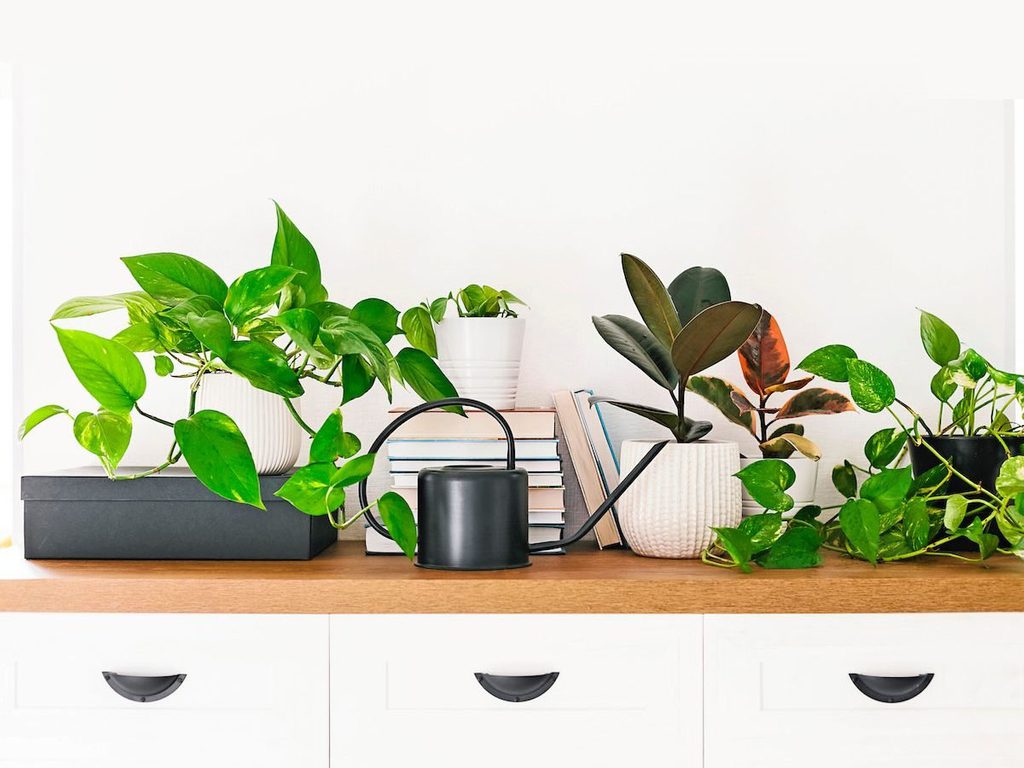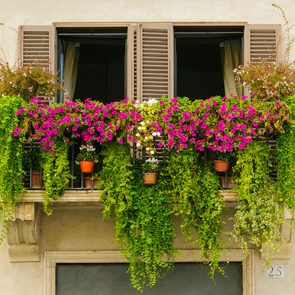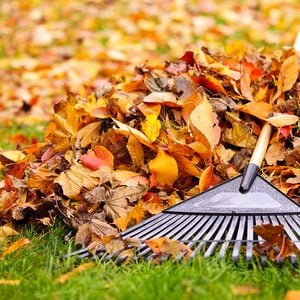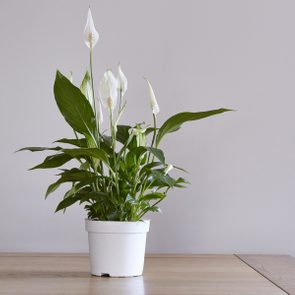How to Get Rid of Indoor Plant Bugs

Learn how to eliminate and prevent bugs on indoor plants, including aphids, mites, mealy bugs, scale, fungus gnats and more.
Seeing sticky stuff on your houseplants? This is a sure sign that your indoor plants have bugs. Here’s how to protect your plants and treat the most common indoor plant bug problems.
Mites, Aphids and Scale on Indoor Plants
Pests such as mites, aphids, scale and mealy bugs drink up plant juices, secreting the excess. This clear sticky substance is called honeydew and is often the first clue these pests are feeding on your plants. The leaves may also yellow and turn brown.
Try rinsing the bugs off indoor plants first. A strong blast of water dislodges many of the insects. If that doesn’t get rid of them, move on to insecticidal soap or organic horticulture oil labeled for houseplants. (Don’t miss the low-light houseplants that thrive in near darkness.)
Fungus Gnats, or Small Flies, on Indoor Plants
Question: I received a plant as a gift, and along with it came gnats! Insecticidal soap didn’t work. Watering less seems to help, but as soon as I water, the gnats are back. Do you have any pointers? —Peggy Haskin of Racine, Wisconsin
Are small flies flying around your indoor plants? Fungus gnats are those annoying insects that look like small fruit flies flitting around the house. Controlling immature fungus gnats, which are wormlike larvae that feed on organic matter in the soil, eliminates the problem. Fungus gnats are not harmful but certainly are annoying. To evict them, allow the soil to go a bit drier and trap the adults with a container of apple cider vinegar on the countertop. And there is another organic option. Bacillus thuringiensis israliensis (Bti) is a naturally occurring bacterium that kills the fungus gnat larvae, mosquitos and black flies. Just sprinkle the bits on the soil surface and water. When the fungus gnat larvae feed upon the Bti, they die. Best of all, the product is safe for pets, people, and wildlife. Sprinkle the product over the soil surface and repeat as often as the label directions recommend.
Next, check out how to revive a dead plant.






